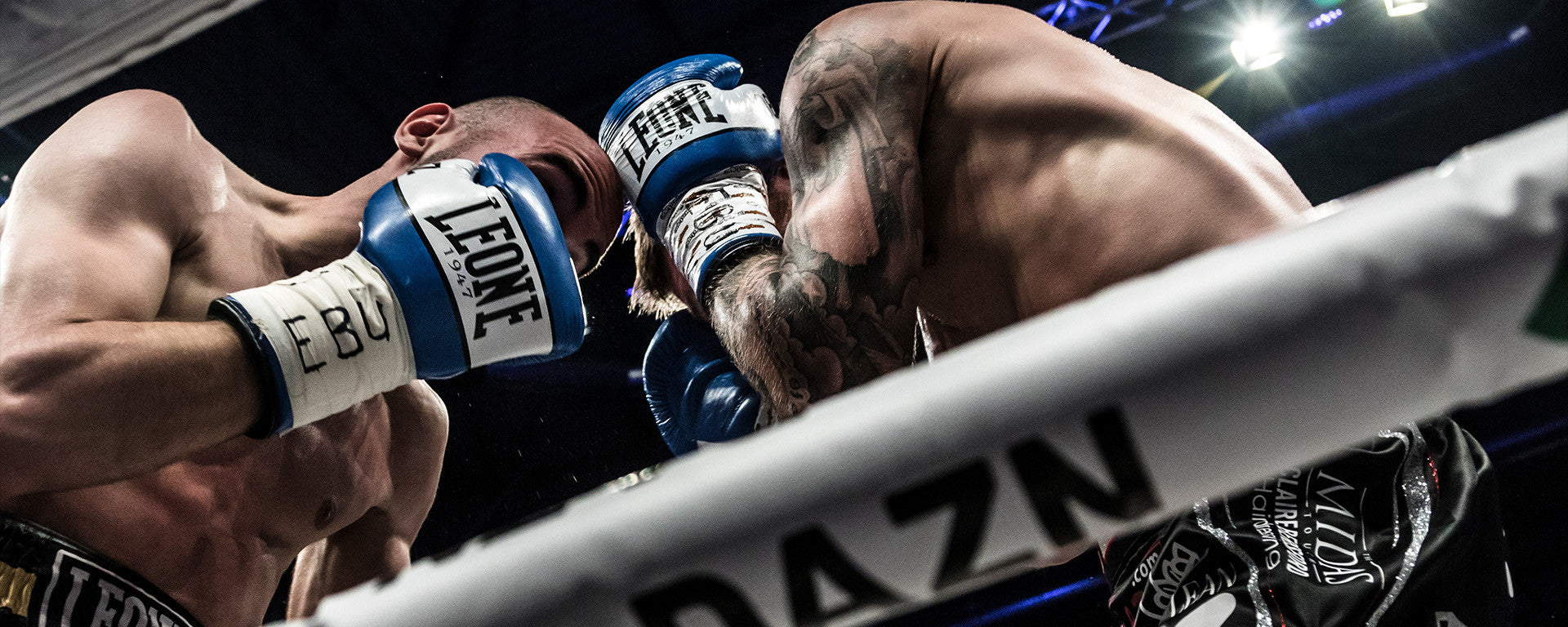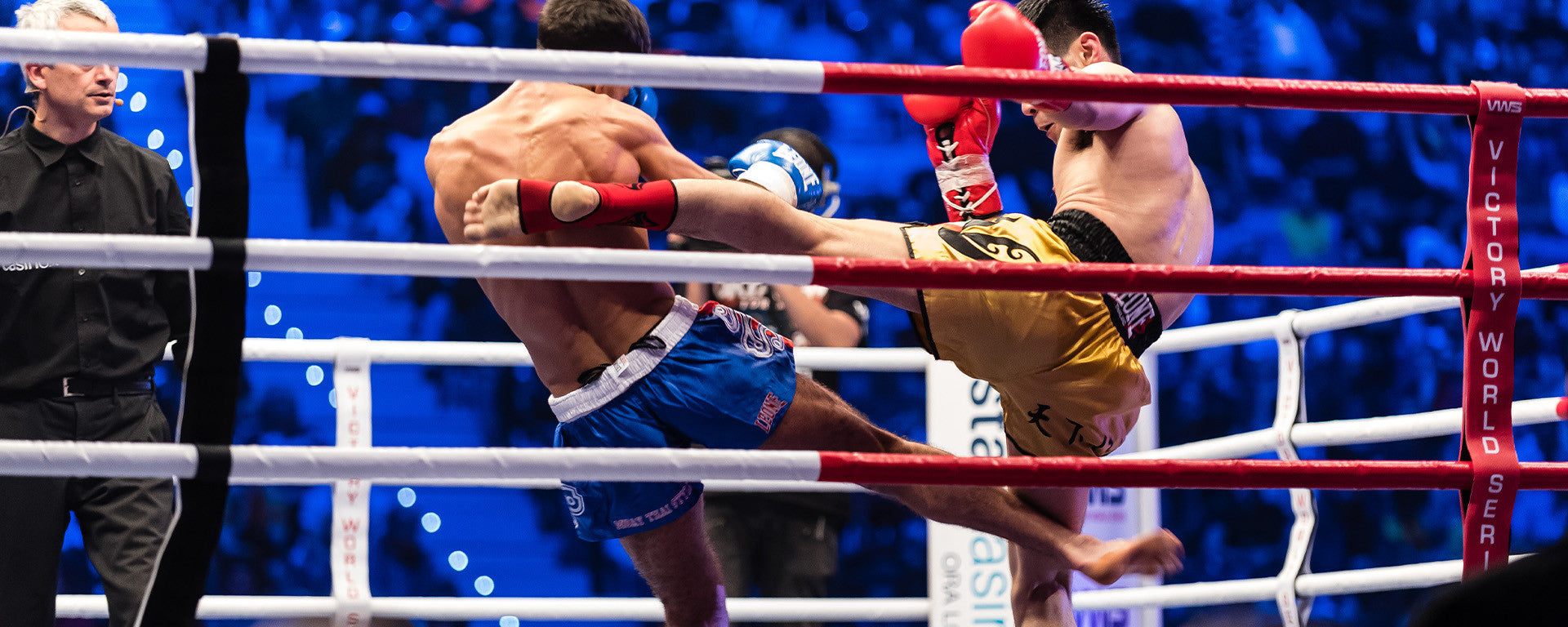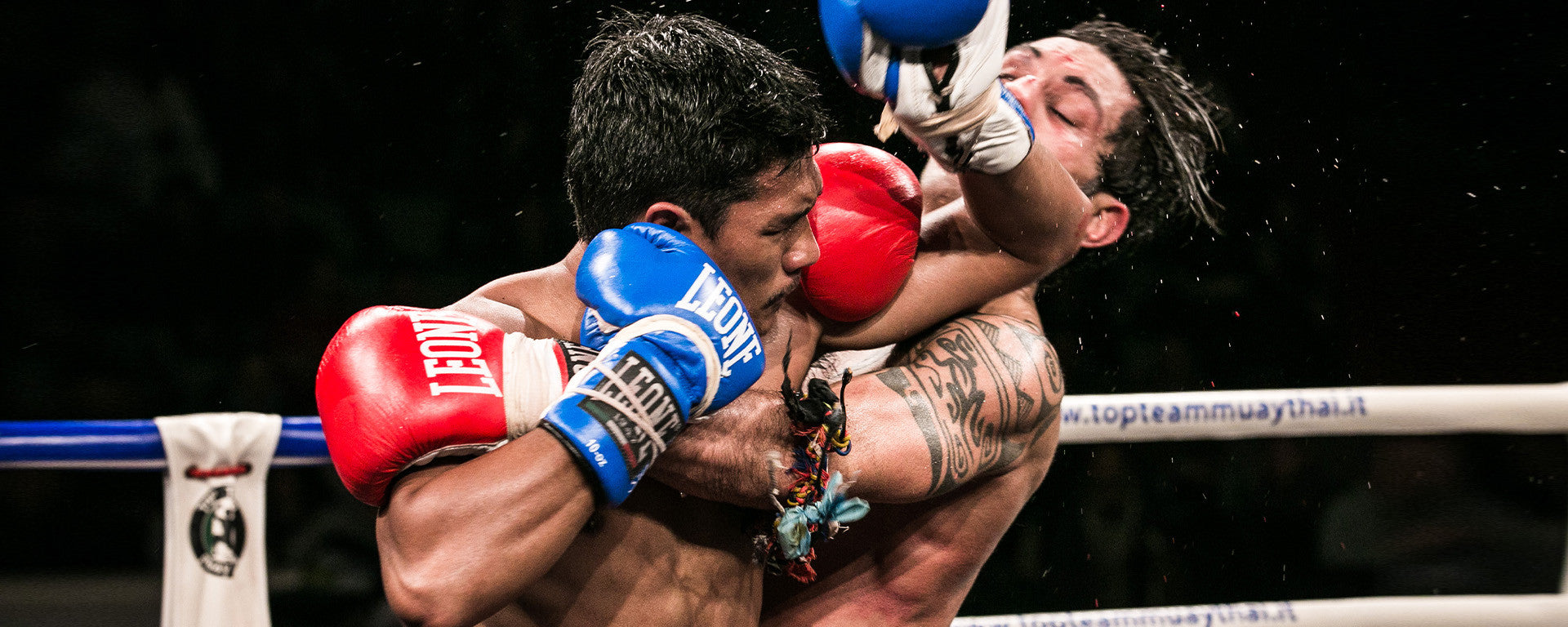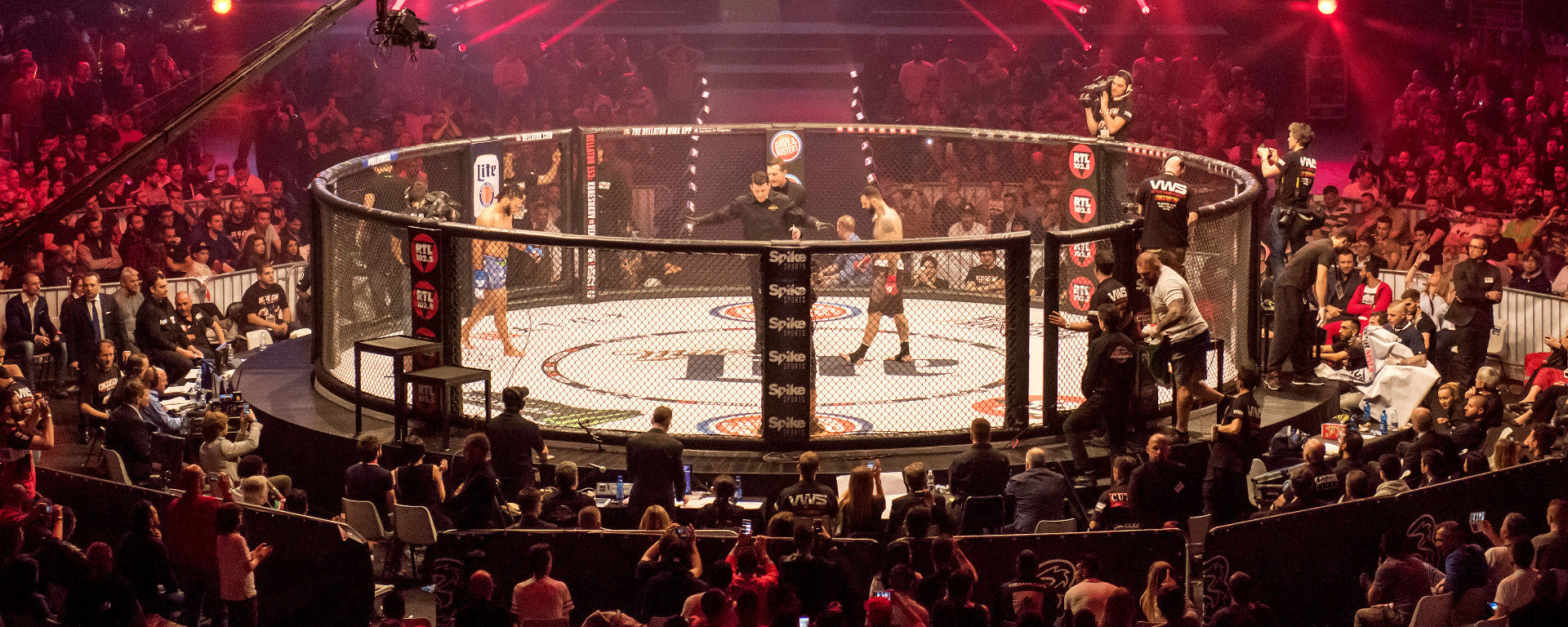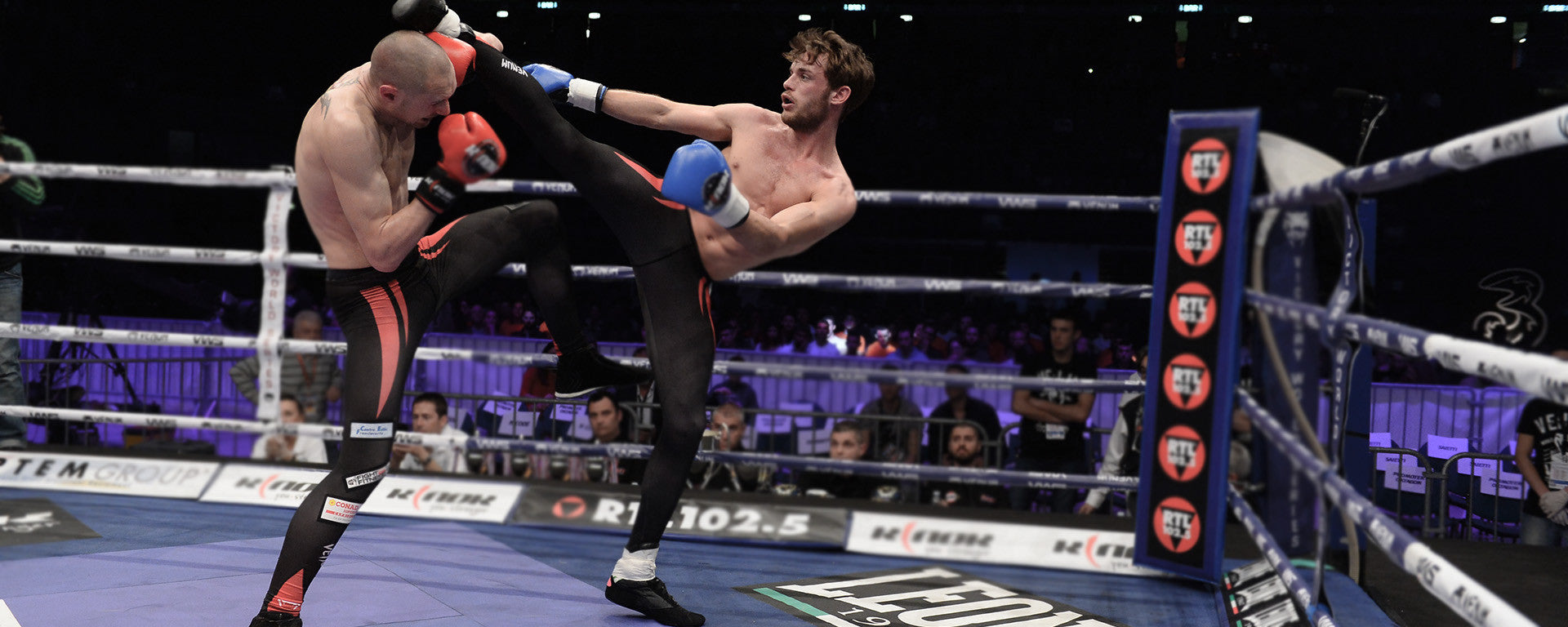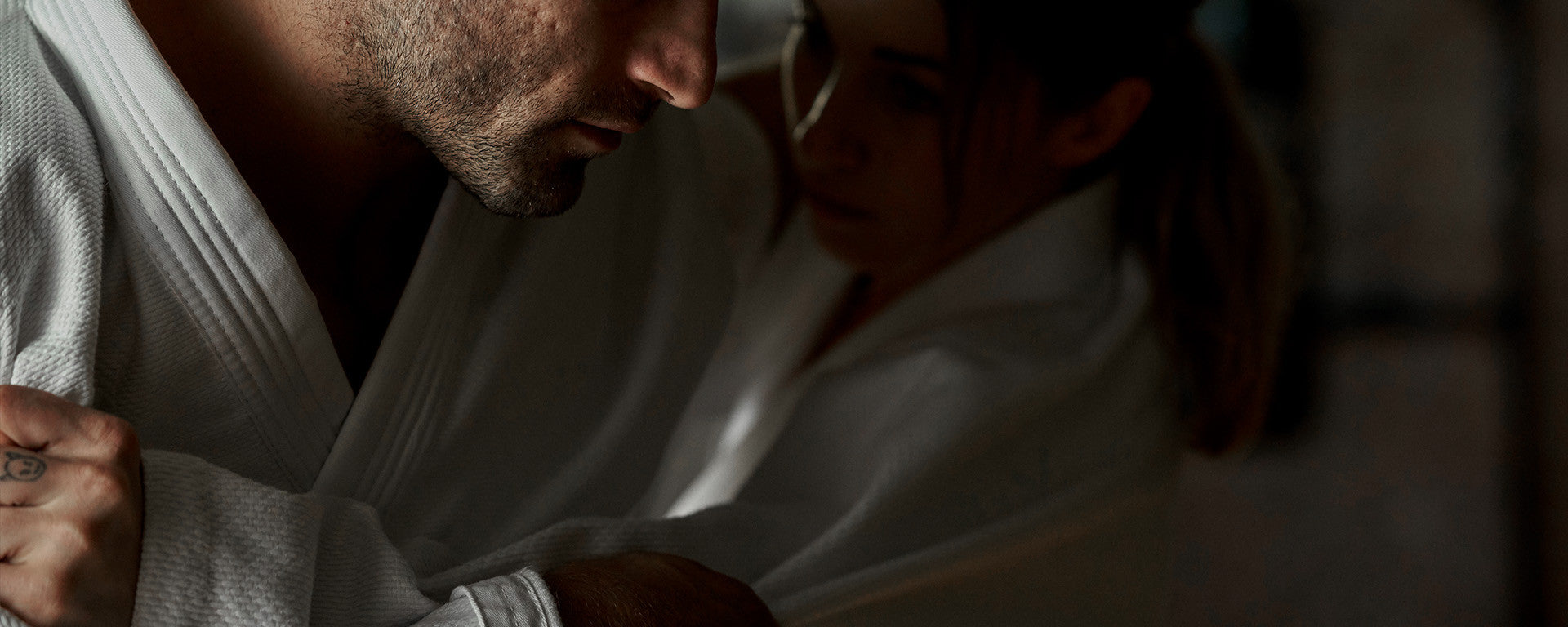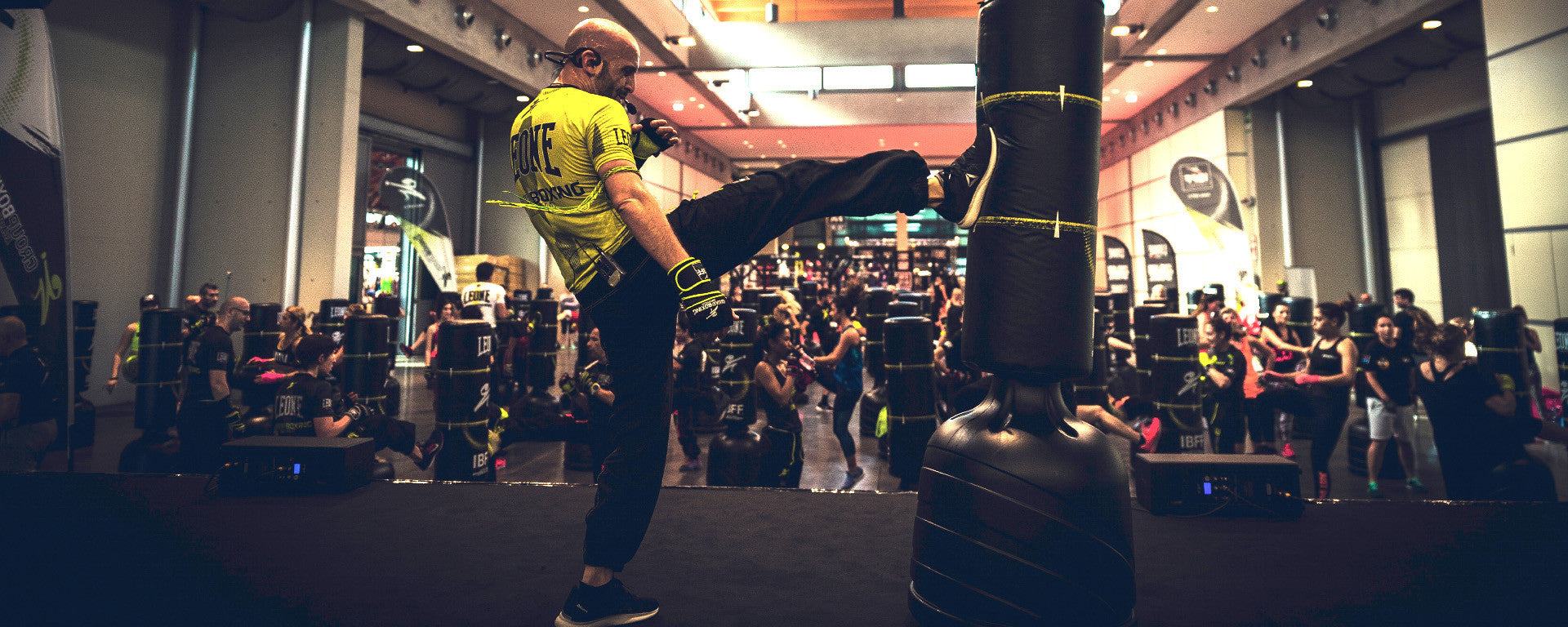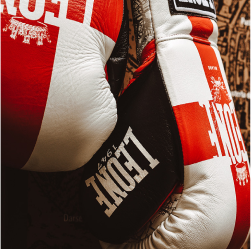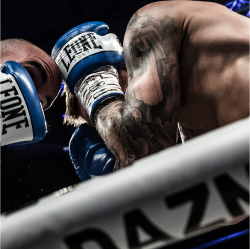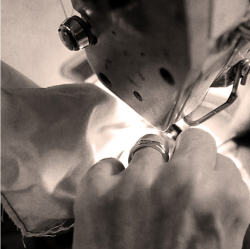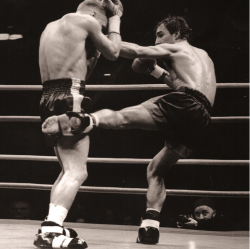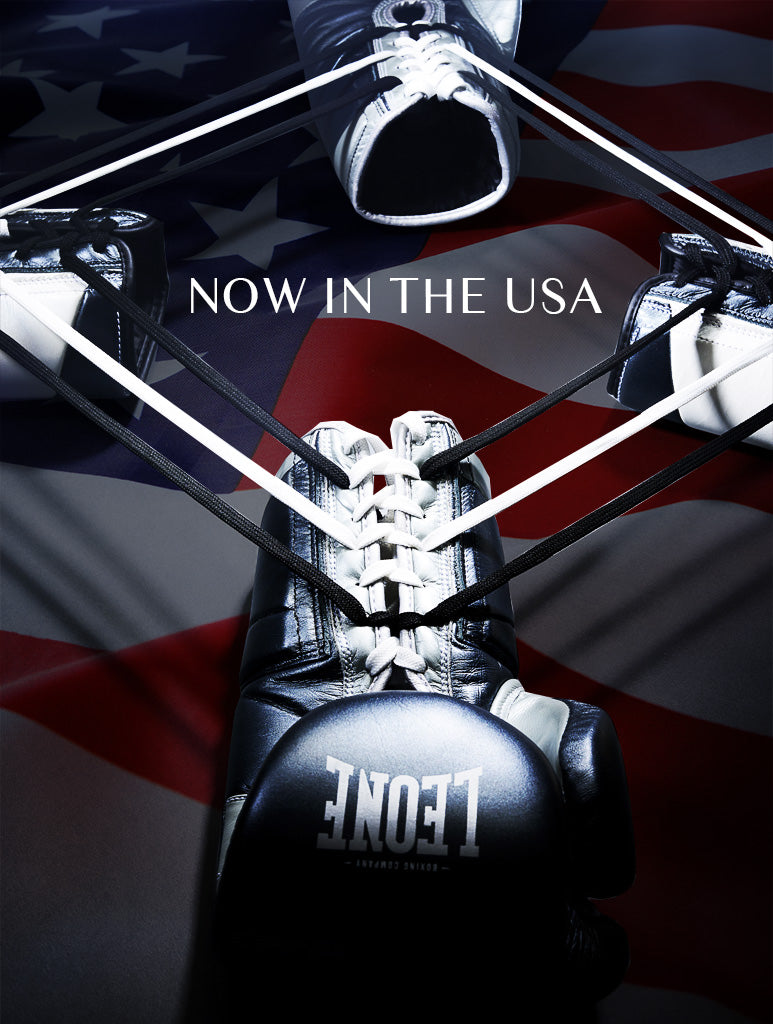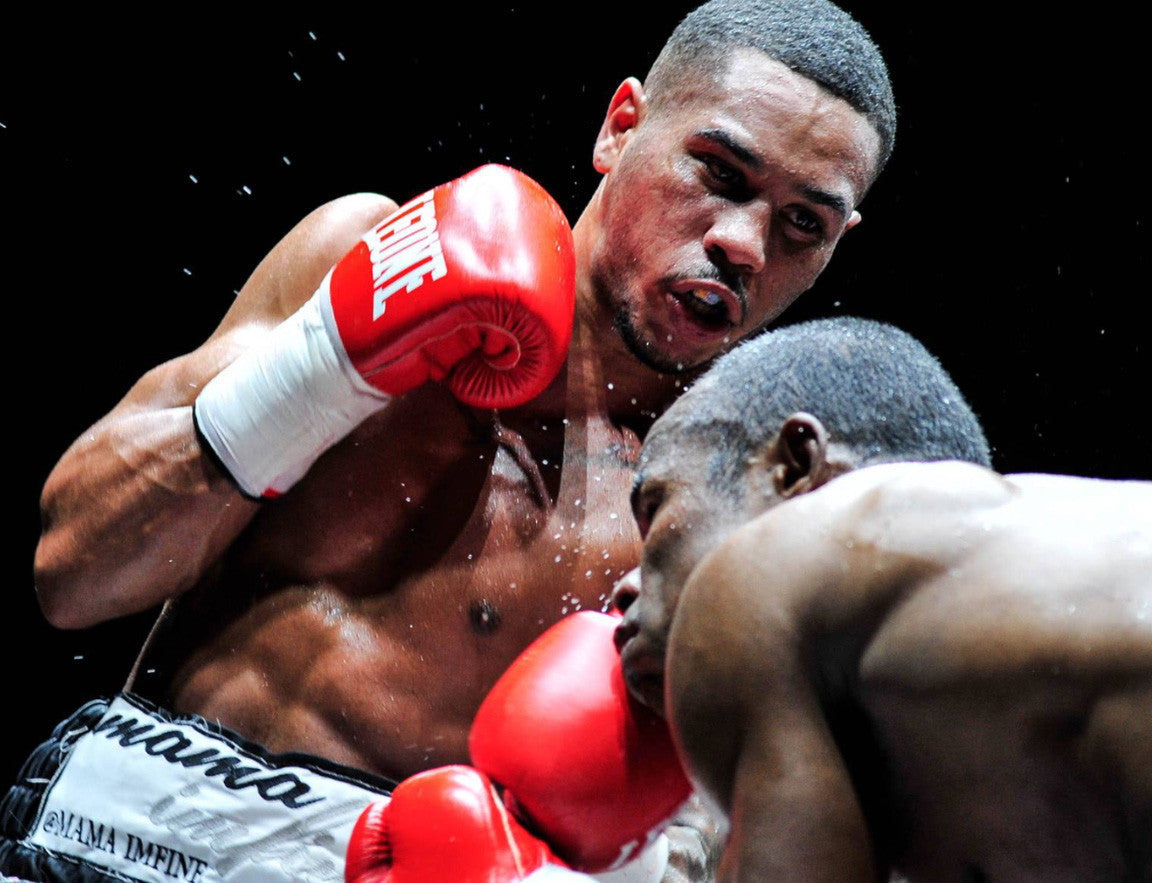
BOXING
Boxing is the oldest and most well known fighting sport of western origin. The athletes, divided into weight categories, face each other in a ring hitting each other with clenched fists (protected by suitable gloves), in order to weaken and land the opponent. This sport has been known, since the 11th century, also as "the Noble Art", as it requires its practitioners characteristics such as courage, strength and intelligence. It is the only ring discipline to have been admitted to the Olympic Games.
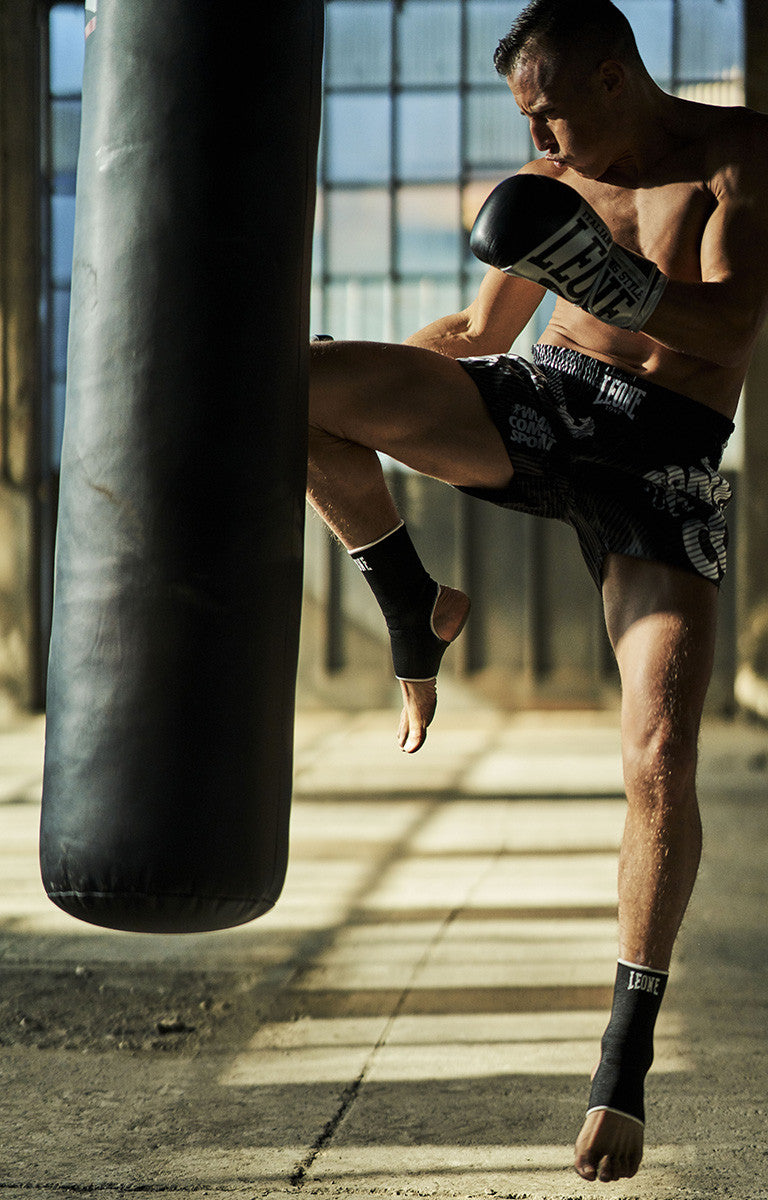
KICK BOXING
Kickboxing is a combat sport that combines the kicking techniques typical of oriental martial arts with the punches of English boxing. The term "kickboxing" was coined in Japan in the 1960s. The Japanese promoters, seeing the success of the muay thai matches, after a study of the various existing race regulations, decided to eliminate the elbow strokes, the grips and, subsequently, also the knees. It remained a combat sport in which athletes use punches and kicks to the legs, trunk and face. Thus was born "Japanese kickboxing", then abbreviated as "kickboxing", a discipline that quickly spread all over the world with enormous success.
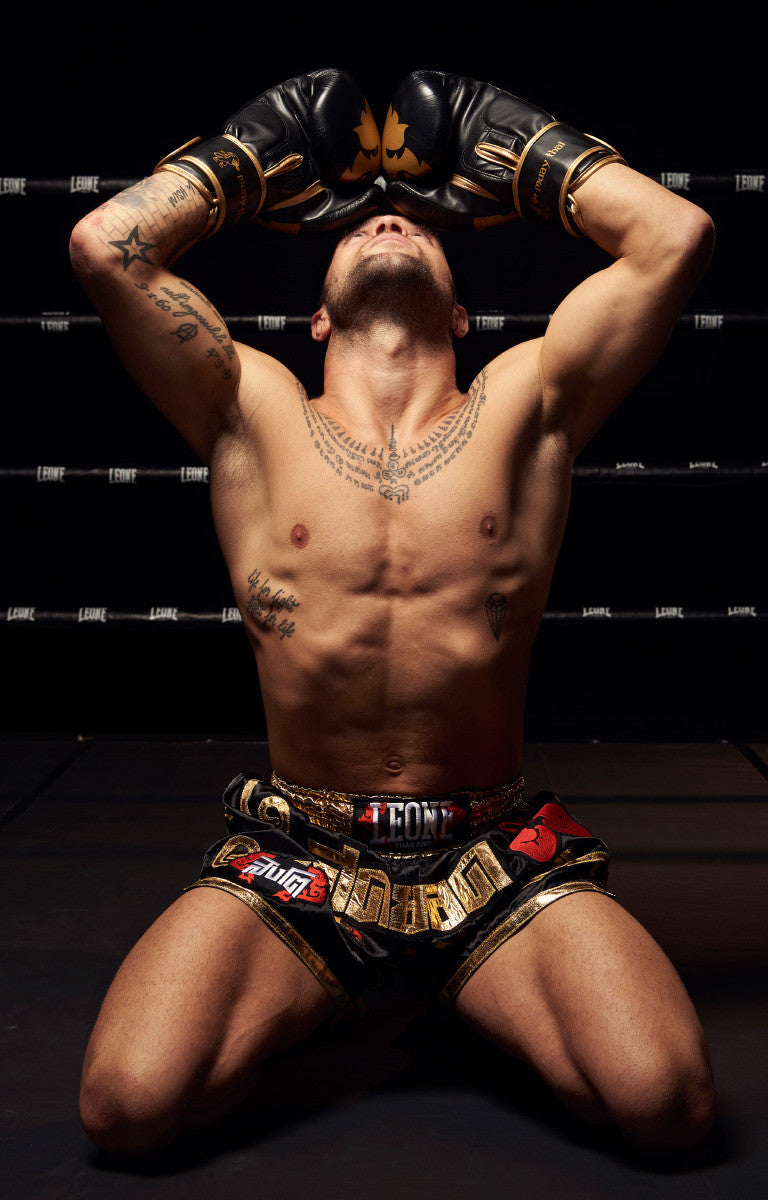
MUAY THAI
Muay Thai, also known as thaiboxing or Thai boxing, is a full contact combat sport that has its origins in mae mai muay thai, ancient Thai martial art. The discipline is known as "the science of the eight limbs" because it allows the two contenders to bring combinations of punches, kicks, elbows and knees, therefore eight parts of the body used as points of contact, compared to the two of boxing or the four of kickboxing .
The original muay thai became popular in the sixteenth century in the ancient Kingdom of Siam, but spread internationally only in the twentieth century, thanks to some substantial changes to the competition rules that transformed it into an effective and spectacular ring discipline.
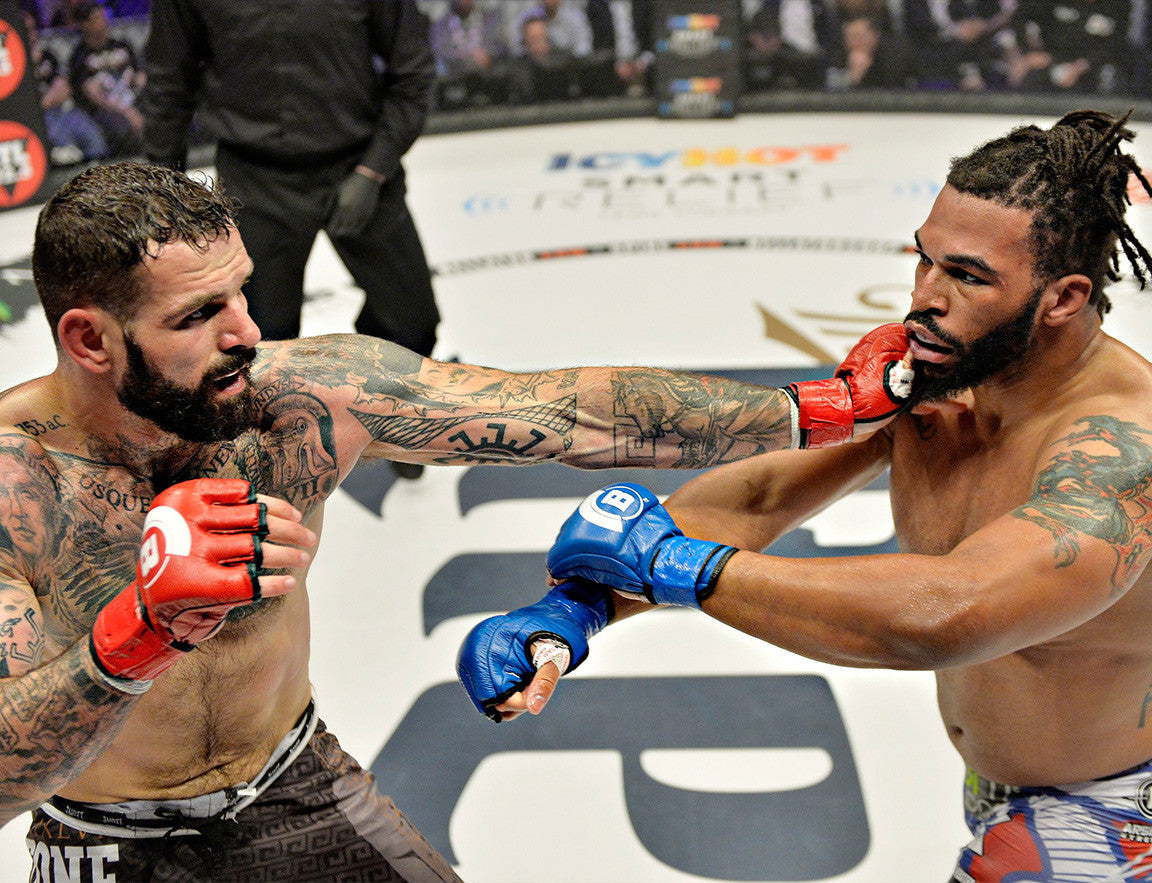
MMA
The term mixed martial arts (often abbreviated as MMA, stands for "mixed martial arts"), indicates a full contact combat sport whose regulation allows the use of both hitting techniques (ie kicks, punches, elbows and knees), and fighting techniques (such as projections, levers and strangulation). An MMA competition starts with standing combat and can therefore continue on the ground. Athletes can win by points, either by KO or by submission (i.e. forcing the opponent to surrender by lever or strangulation). Special "open hand" gloves are worn that allow you to grasp the opponent to apply the fighting techniques.
FULL CONTACT
Born in the seventies in the USA with the original name of full contact karate, it is a sport derived from karate in which, unlike the fighting of the latter and the variations "point karate" and "semi-contact", full is allowed contact ("full contact" in English) from the belt up. The discipline was invented by the American champion Joe Lewis together with a selected group of masters eager to prove the real effectiveness of the various techniques of traditional martial arts combined with boxing punches.
SAVATE
Savate (also known by the name of French boxing) is discipline born in the poorer neighborhoods of Marseille and Paris in the early nineteenth century as a form of street fighting. It was subsequently modified by the French aristocrats who transformed it into their own form of personal defense. At first the techniques could only be performed with the feet, but slaps with the hands were introduced from 1820 and in 1830 the contenders began to use boxing gloves. Unlike other ring sports, where you fight barefoot, in the savate you use shoes without heels with reinforced sole and toe. You can hit your opponent anywhere except the nape and the genitals.
KARATE
Karate is a martial art born in Japan, in the Okinawa islands. It was developed by indigenous fighting methods called “te” (lit. "hand") and Chinese “kenpō”. It involves defense with bare hands, without the aid of weapons, even if the practice of Okinawa Kobudo, which involves the use of traditional weapons (Bo, Tonfa, Sai, Nunchaku, Kama), is strictly connected to the practice of karate . It is currently practiced in a sports version (deprived of its martial component and aimed at the competitive results typical of western competition) and in a traditional martial art version for personal defense.
Depending on the various styles, karate is made up of numerous techniques: punches, kicks (mainly on the legs and trunk), elbows, knees and percussion blows with open hand in sensitive areas of the human body (femur, joints, liver, throat, floating ribs) in order to cause anatomical trauma that neutralizes the opponent in the fastest and most effective way possible following the rule of "minimum effort, maximum result". All these techniques are accompanied by a set of parades, dodges, displacements and slides to deflect and intercept the attacks as well as projections, sweeps, blockages and joint levers. However, one should not think of Judo or Aikido. The projections and sweeps of karate do not foresee to "throw" the opponent in the distance (as in Aikido) but to "crumble" him on his center, on the ground, to prevent him from counterattacking and then finish him with strike techniques. Karate, moreover, is primarily an art of percussion although his study includes all the fighting possibilities.
JUDO
Judo is a martial art, a combat sport and a Japanese self-defense method formally born in Japan with the foundation of Kōdōkan by Professor Kanō Jigorō, in 1882. The practitioners of this discipline are called judoists or more commonly judoka . According to the teaching method of Prof. Kanō, Kōdōkan judo basically consists in practicing the fighting technique and in the theoretical research elaborated by the "yawara" principle.
«Yawara means adapting to the opposing force in order to gain full control. Example: if I am attacked by an opponent who pushes me with a certain force, I do not have to fight him, but at first I have to adapt to his action and, taking advantage of his strength, draw him to me by making him bend the body forward [.. .] The theory applies to any direction in which the opponent exerts force. "
Judo offers a rich repertoire of fighting techniques. These techniques include the application of the yawara principle (not only in the context of passive elasticity understood in the Buddhist sense, but also as an active principle of counterattack), they enumerate the attack-defense principles of the Kanō method and demonstrate its effectiveness both in real combat and in sports competition.
FIT BOX
FIT BOX developed in the style of boxing or kickboxing. Very often it is accompanied by music tracks with motivational intent or that mark the rhythm of the hits. Fit boxing is not part of combat sports and there are no opponents; the blows are carried exclusively against a special bag or against the gloves of a training partner - at the discretion of the coach and depending on the type of training. Fit boxing improves much of the muscle condition as well as increasing muscle resistance and elasticity thanks to the mixed aerobic and anaerobic characteristics. It also allows you to train the communication between mind and body: therefore to decrease the time necessary to think about a movement, process it and transmit the impulse.
In recent years not only fit boxing, but also the athletic preparation of kickboxing and boxing, have become a very popular training style.
